“People found universals of human experience that they could relate to”: The cast and creatives at the global press conference for the re-release of Avatar
Ahead of the cinema release of the highly anticipated second adventure in the James Cameron’s franchise, Avatar 2: The Way of Water, the original film that debuted over ten years ago will return to the big screen in a bid to give background to the new sequel and as a platform to garner and reignite fans. Avatar is a visual feast with breathtaking effects and Cameron was keen to share that,
The Upcoming had the pleasure of hearing from James Cameron, Sam Worthington, Zoe Saldana, Sigourney Weaver, Michelle Rodrigues and Stephen Lang at the virtual global press conference 2022.
Why did you want to bring Avatar back to the big screen, and how will audiences be able to experience it now?
James Cameron: It has been 12 years since the release, so if you’re under 22 or 23 years of age, it’s very unlikely that you’ve seen the film in a movie theatre; which, in a way, means you haven’t seen the film. We authored the film for the big screen in 3D, and now we’ve remastered it in 4K, in high dynamic range and some 48-frame-per-second sections in the film. There’s a whole new generation of film fans coming up. Even if they like the movie on streaming or Blu-ray or however they saw it, they still haven’t really seen the movie the way we intended it to be seen. We just watched the film recently when we finished the whole remastering process, and it blew us away. So it’s looking better than it ever was.
What are your favourite memories of making the movie?
Sam Worthington: When I first read it, it’s things like floating mountains, things like Thanators. I have no idea what this man’s talking about and, least of all, how we’re going to do this. My biggest memory is when you’re in that volume, this sense of play; it was Jim, every day, saying, “Look, I’m gonna build something and create something that will translate to be the floating mountain, and I need you to jump off it and I’m going to have guys coming at you, attacking you, and they’re going to symbolise, later on, Viperwolves”. You just dove in – that was part of the fun. I was like a five-year-old kid in a big play pit.
Sigourney Weaver: I was in my little capture suit and my first scene was actually to play Dr- Grace Augustine’s avatar. There is a screen over on the side, where you can see a roughed-out version of what it will look like in the movie – in other words, so I don’t look like me in a suit. I can see a roughed-out version of Grace’s seven-foot-tall avatar, with her tank top on in this jungle world, and that gave me a thrill, a great sense of relief that maybe this would work. But also this idea that, from this little room, we were gonna be able to create this other world that was so fantastic. The only way you can go to Pandora is by going to the theatre and seeing it in 3D. That’s the rocket ship. And I got that on that first day, just from my little part of it.
Zoe Saldana: I can’t forget getting that phone call from Jim saying, “I want you to play Neytiri.” I was changing my niece’s dirty diaper at that time! I remember just the thoughts that ran through my mind: excitement, gratitude… I was getting to work with my idol. Then it was like, I got to get to work. She has an arrow and she knows martial arts, so that kind of excitement of wanting to go to school, and then not knowing where all this was going to fall into place. But every time I would come into this big, sterile, grey volume that was freezing all the time, and I’m wearing a onesie, there he was with a camera chasing me around. Then the reception of it just far exceeded all of our expectations. It was a very magical journey for me.
Michelle Rodriguez: if there’s anything I could take away from shooting an Avatar movie with Jim, it’s the openness of my horizon. My perspective shifted. I have to work harder to get around a problem. The resiliency; the example of leadership; just being on a set and watching how he would inspire everyone in their field – whether it’s engineers, whether it’s people in the art department – to do their best. It was just a fantastic experience.
Stephen Lang: It would have to be the that first commissary scene – that “you’re not in Kansas anymore” scene, which I believe is the first scene I shot in the movie. Two things happened in that, which actually rippled out for the rest of the shoot for me, and, indeed, ripple out into the sequels as well, and to the way that I work with Jim. First of all, he encouraged me to be as free and as improvisatory as I felt I needed to be. He was giving me permission to take authority over this room, and that was important because it was a room filled with people. He was directing the film, he’s the boss, but he really gave me authority over that room. That was a very generous thing to do, and it was a very smart thing to do. I was fortunate to be able to do that. That kind of faith that he placed in me just in that scene right there that has extended throughout our working relationship.
Why do you think the film was so incredibly popular with audiences back when it was released? Do you think those same things will resonate today?
JC: Well, I think any film is only as good as the people in it, and you see in front of you five individuals who brought their heart and souls to that film. Zoe’s challenges were different from Michelle’s challenges, and Slang’s challenges and so on, but I think people respond to people. But in this particular case, with Avatar, they’re responding to people sometimes that are ten feet tall. Technically, Zoe, I think you’re nine foot two.
ZS: The ultimate supermodel!
JC: Exactly! You’re in a world with these otherworldly characters – big eyes and cat tails and that sort of thing. I think it took us out of our day-to-day problems, political discourse and the chaos and disorderliness of real life, and it took us to a place where, yes, there’s conflict – there’s all sorts of important things going on – but it’s all through a lens of fantasy or science fiction.
From whatever culture you’re in, whether you’re in China or Japan, Europe, North America, it didn’t matter: people saw some universality of their lives and these characters through this lens of science fiction. Then, I think it was the physical execution – the finish of the film that, I think, in the first few minutes, people just gave up trying to figure out how it was done, because we mixed so many techniques. They just surrendered to a sense of immersion in a world, a fantasy, and you’re willing to go on a fantasy if you can relate to the main characters. I think people found universals of human experience that they could relate to.
There’s one other thing, too, which is that I think, when we’re kids, we just innately love nature. We love animals. As our lives progress, we come more away from nature. I think society at large, anywhere in the world, is suffering from nature deficit disorder to some degree. I think that the movie puts us back into that childlike wonder about nature – nature’s grandeur, complexity and beauty.
Sigourney, on that first day, how thoroughly did you know what your character was going to look like? How did that impact how you played the character?
SiW: Interesting question. I think it was early days when I shot Grace’s first avatar. With Jim, you step off the cliff; you know that the best people in the world are in charge of every department, and you can trust that the process will never let you down. So my challenge that day, on that first day, was to invent my avatar self who is so much taller, freer, not a smoker… a person in touch with the natural world in a way that Dr Grace Augustine could never be because she’s a human – she’s an earthling; this is not her planet. So, there’s just no end to the fun you have, in terms of challenges that keep coming at you in a Cameron film. You never go, “My job is done.” That never happens.
Michelle, which scene is your favourite to watch and that you’re excited to see remastered?
MR: The tribal ceremony at the Tree of Life, when they’re trying to bring back Sigourney’s character to life. There’s something really powerful about that moment, and it resonates with me in such a deep way. It seems so beautiful, natural, ancient, spiritual… I felt like I was on earth looking at the ceremony while on some sort of hallucinogenic. That’s my favourite scene.
Zoe, in what ways did the movie and its experience change you as an actor?
ZS: We can see all the opportunities that being a part of Avatar gave me: I was able to build a career and a lifestyle and still support my family, which, for artists, is a very important thing. I love storytelling; it really instilled in me that discipline to dig deeper, to create a backstory for a character – because, in order for you to understand where your character is, you need to know where your characters comes from. Being a part of Avatar was my Juilliard; it was my NYU course where I really got to play with people that were genuinely wishing me to succeed. It was an environment that was very playground-like, I was very free. I remember Jim saying so many times, “There’s no such thing as a mistake – just you try it, and if we don’t like it, at least we tried it.” And I also would hear him say to other people, “If I’m coming at you because something isn’t working, and you come at me with some bullshit story, you better just tell me, ‘I don’t know what happened, sir.” I remember going, “Don’t ever have everything to say. When you don’t know, you just don’t know, and let’s keep finding it.”
Slang, movie fans have embraced your character, Quaritch, since the movie came out. Has that surprised you?
SL: I think to an extent it has surprised me. But when I think about it, the reasons behind it, it becomes somewhat less surprising. I think that, in playing Quaritch, we know his function in the script – we know he’s the bad guy. What is helpful for me is to find the qualities that have brought him to this position of leadership that he is at when we meet him. He is a very capable commander: he inspires loyalty, he leads by example; I think that his courage is probably unquestioned. And so what I’m saying is that there’s a lot of positive qualities to the man. He just happens to have a little problem fitting in with this planet. I’ve had people come up to me and, kind of in a sotto voce way, say, “You know, I really am behind Quaritch. I’m on his team.” And I always feel like, “Really? I don’t want to know you.” People respond to leaders, no matter what their moral stance may be. I think that we see a lot of evidence of that in our recent political climate in the United States.
Sam, why do you think that audiences are still so emotionally attached to Avatar?
SaW: I think this was a story about a young guy that went to another planet and he was looking for something – looking to belong – and he found it in another culture that he didn’t really know anything about. That sense of belonging permeates with all of us: we’re all looking for our own little clan, our own clique, our own group of people that can comfort us and give us confidence, and that we can learn from. I don’t think that was a theme that was hammered out. I just think that that was a subconscious feeling that maybe we all received globally when we watched the movie – this sense of wanting to belong.
Jim, in the 12 or 13 years since Avatar was first released and it became the biggest movie of all time, what do you perceive as its most substantial influence on modern blockbusters?
JC: Avatar was certainly not the first film to use advanced computer-generated effects – that’s been a trending wave before Avatar, through Avatar, and beyond. Avatar won best cinematography with a 3D digital camera. No digital camera had ever won the best cinematography Oscar before and then, two out of the three subsequent years, the same cameras were used by the cinematographers that won the Oscars. So you’ve got three out of four years where digital cinematography was embraced by the Academy. All three of those films, three out of four, Oscar-winners for four years, were in 3D. Then 3D appears to most people to be over, but it’s really not over, it’s just been accepted. It’s now part of the choices that you face when you go to a theatre to see a big blockbuster movie. So you could choose to see it in 2D or choose to see it in 3D, When colour first came out, it was a big deal; people used to go see movies because they were in colour. I think around the time of Avatar, people went to see movies because they were in 3D. Nobody’s going to go see a movie today because it’s in 3D – it’s all the other factors by which we choose a film. So I think it had an impact on the way films were presented that’s now just sort of accepted and part of the zeitgeist and how it’s done. In terms of longterm cultural impact, well, I guess we’ll find out if people show up for Avatar 2.
What was your first reaction when you saw the movie 12 years ago on the big screen?
ZS: I was in shock. I was completely enamoured with what I was sensing, and it was an immersive experience unlike anything I had ever seen. I felt grateful; I felt very humbled. Let’s not forget that when Avatar came out, it wasn’t like we came out with a big splash – we came out, and we were solid, but these ripples kept growing and growing as time kept going by, and they became this really big thing. How people were captivated by it was really humbling.
SiW: For me, as a spectator, the 3D in the world, like when Sam’s character has to get his Ikran, those physical experiences of almost falling into the void because you’re up above the floating islands, those were incredible. What really moved me was using such effective 3D that you feel like you’re in the room with Jake when he’s having to make some decisions; that you’re in the place with Neytiri when she’s moving through the forest. It took all the barriers away between me and the world in the emotional scenes with humans, and in the world of Pandora. The decisions they made felt much more personal to me because I was in their world with them, and I had something at stake in that world. I couldn’t get away. There’s no escape.
SL: The script that I read of Avatar was so detailed, so rich and dense with description, that it was very novelisticn– it wasn’t a conventional screenplay to me. So that was the movie I always had in my head: the one that I had read. This novel, that’s the movie I saw up there. That’s pretty remarkable to me to actually, literally translate what I had read, what I was led to imagine by the writers, and to have it realised up there on the screen.
MR: He pulled it off. Like a mic-drop moment. Things like love, connection to nature and beauty… I knew it the moment that I saw Jim having a prolonged conversation about fauna, and the colour of it, that this guy is not gonna settle in any way, shape or form when it comes to translating the beauty. If he’s able to make this connection between beauty, Pandora and nature, he’ll be able to make that connection with the human. Everything that he wrote went to the screen. I get it now. That’s why he’s such a stickler for detail.
SaW: It looked like us. I think Jim always made us that promise that, even though you’re going to be big and blue, it’s you. It’s the technology and the performance captures. He described it once to me as “it’s the next level of makeup”. I was always a bit worried that the subtlety that you could act wouldn’t really translate, but I remember seeing Sigourney blue and Zoe blue and myself blue, and it was us – every pore, every detail. Whatever got translated from the volume of our performance through all the computers, it kept that essence. That was the promise that he made me, and that’s what came out. That detail of our acting wouldn’t be overshadowed, it was just there. When Michelle is flying in the helicopter and she says, “You should see the look on your face”, that’s what I look like. That photo, that picture in the helicopter is also how I looked when I saw it for the first time.
What makes each of you proud to have been a part of this film?
SL: I think I’m proud to be part of a team of such talented, creative, generous people. I think, over the years that we’ve been together and apart and together, we’ve been able to maintain a collegial feeling amongst us. That kind of team spirit is something that I feel so pleased and gratified to be part of.
MR: I don’t think that anybody has ever taken the time, the effort, the care, put so much love behind or has literally put so much mind and attention to something that isn’t valued as much by society, around the world, or by storytelling in general. I feel like Jim’s decision to tell this story is a decision also to show love and respect for life. For it to be as impactful as it was says a lot; it’s almost like throwing water on a desert – there’s a drought out there, and he added water to it. So I’m proud to be a part of that.
SaW: What am I proudest of in this? Jim’s the best. I’m proud he’s my friend.
SW: Jim is a scientist; that may be the first love in his heart. I’m proud that I got to play Dr Augustine, who is a scientist – a woman scientist. Jim had given the world, the audience and certainly my character this whole universe of a new flora and fauna, taking it so seriously; and the Na’vi with their own language, even things that seem impossible, like the floating mountains, and science behind them – incredible. I was so proud to be part of the science of this, so that you’re not dumbing down something for the mass audience. In fact, you’re lifting them up – you’re giving them new ways to think about things. And if I could also inspire more girls to become women scientists, and not smokers… then I will have redeemed something.
ZS: I got an opportunity to belong to a group of people that I just have so much in common with – like a jigsaw that you’re searching to belong to. Jim, he extends, he shares, he’s curious. He’s not an elitist. You get to be an artist. I was given an opportunity, and I honestly feel that I ran with it. And then to be able to come back to that opportunity, it feels like it’s the gift that continues to give. Avatar is a very special story.
JC: Looking back, with the perspective of now 12 years later, I guess I’m proudest in a general sense of the team. And I want to break that down. There’s the beauty that was created by the artists, the designers, the set builders – the people that sort of built out that world in all its detail, and all the creatures in it, and every blade of grass, and the beauty that they were able to create, even when that beauty was scary, like the Viperwolves and the Thanator… I still think of them as beautiful and part of the majesty of nature. But there’s also the human beauty that was created by this cast that’s sitting here right now; this amazing ability to play, to create, to become people, and to do it in different forms. I just look back on everybody’s work and just so grateful to have had an opportunity to work with these amazing people. I think that’s why I promptly went out and wrote another and another and another Avatar. I just wanted to continue with this family, which is such a great experience.
Ezelle Alblas
Avatar is re-released nationwide on 23rd September 2023.
Watch the trailer for Avatar here:

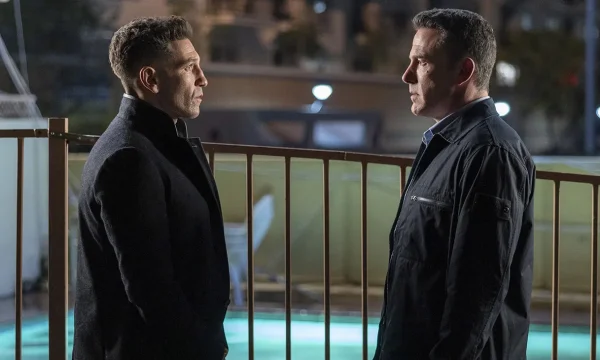
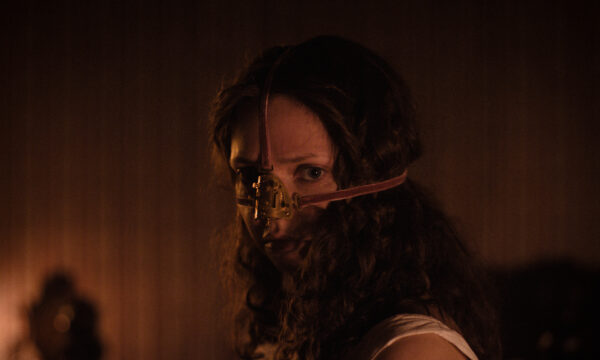
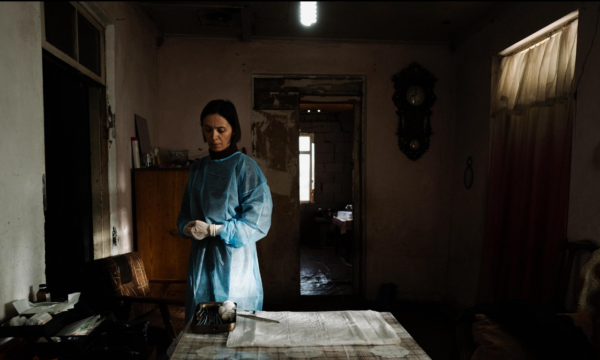
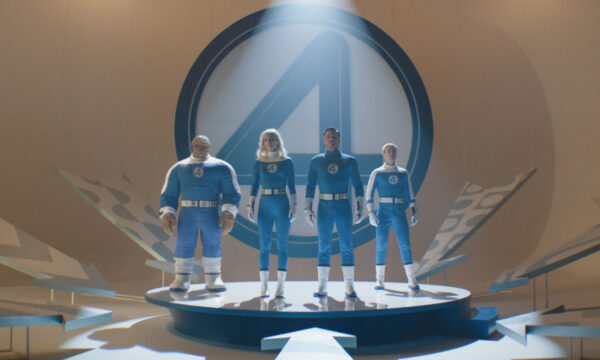
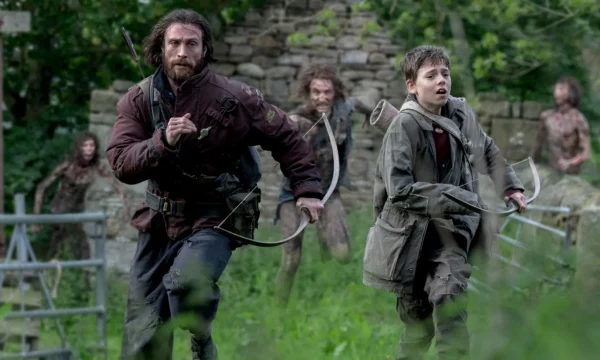
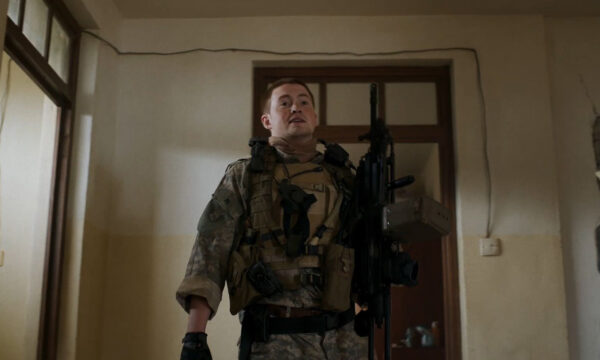

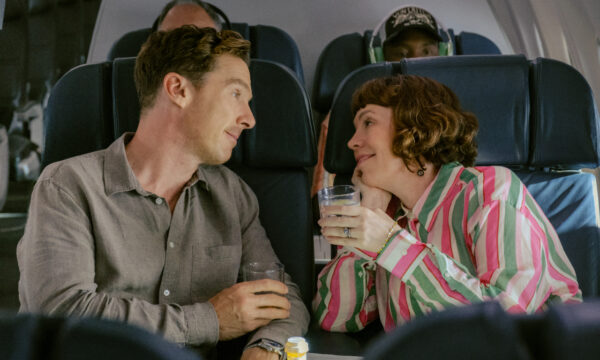
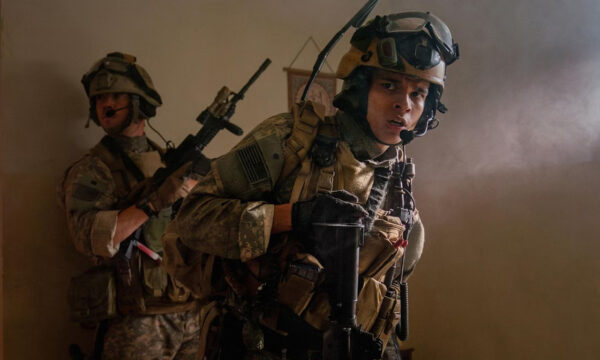







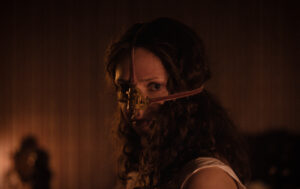
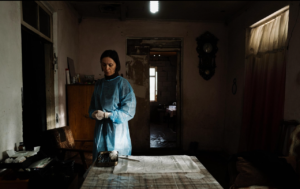






Facebook
Twitter
Instagram
YouTube
RSS